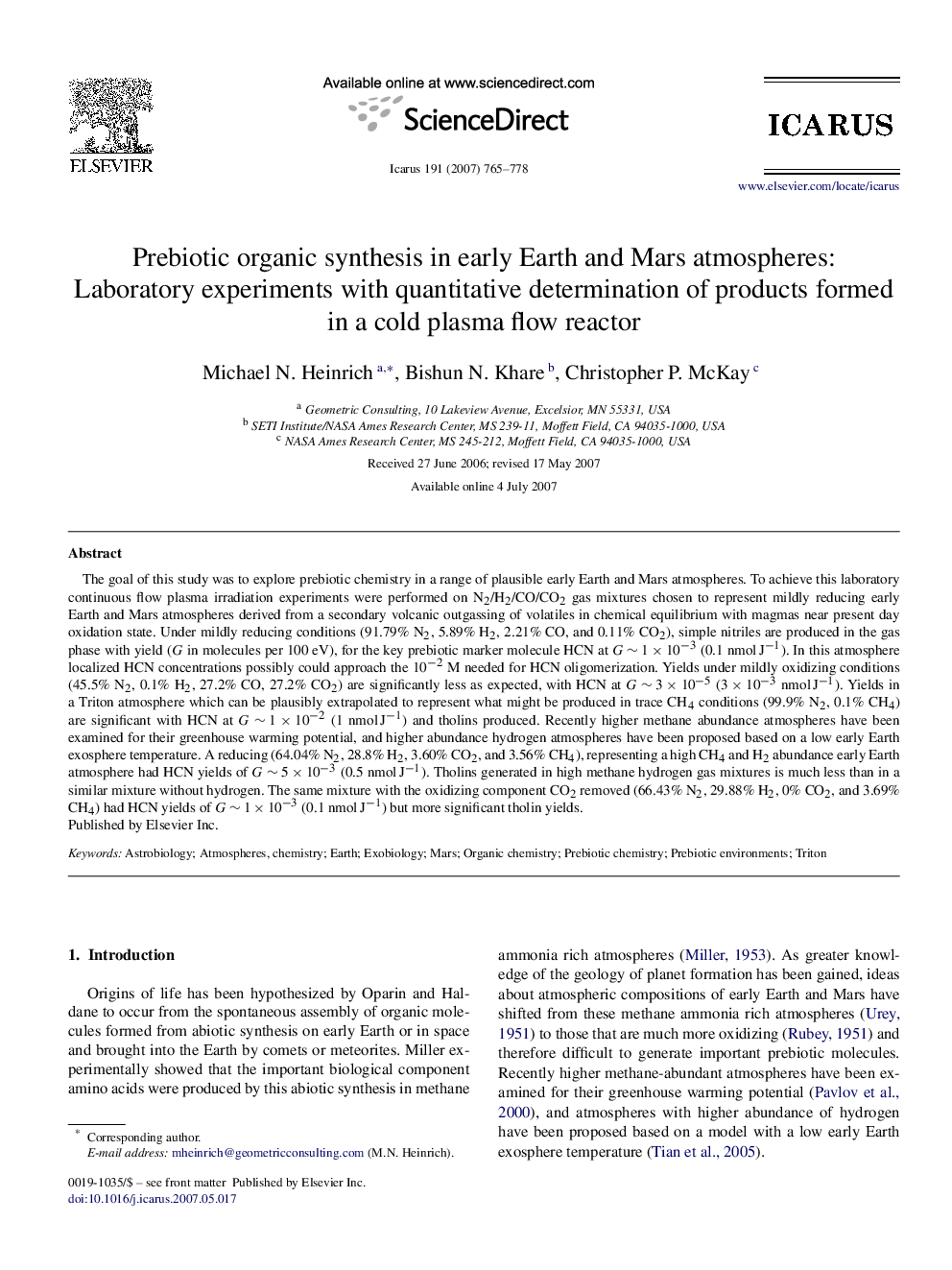| Article ID | Journal | Published Year | Pages | File Type |
|---|---|---|---|---|
| 1775489 | Icarus | 2007 | 14 Pages |
The goal of this study was to explore prebiotic chemistry in a range of plausible early Earth and Mars atmospheres. To achieve this laboratory continuous flow plasma irradiation experiments were performed on N2/H2/CO/CO2 gas mixtures chosen to represent mildly reducing early Earth and Mars atmospheres derived from a secondary volcanic outgassing of volatiles in chemical equilibrium with magmas near present day oxidation state. Under mildly reducing conditions (91.79% N2, 5.89% H2, 2.21% CO, and 0.11% CO2), simple nitriles are produced in the gas phase with yield (G in molecules per 100 eV), for the key prebiotic marker molecule HCN at G∼1×10−3G∼1×10−3 (0.1 nmol J−1). In this atmosphere localized HCN concentrations possibly could approach the 10−2 M needed for HCN oligomerization. Yields under mildly oxidizing conditions (45.5% N2, 0.1% H2, 27.2% CO, 27.2% CO2) are significantly less as expected, with HCN at G∼3×10−5G∼3×10−5 (3×10−3 nmolJ−1). Yields in a Triton atmosphere which can be plausibly extrapolated to represent what might be produced in trace CH4 conditions (99.9% N2, 0.1% CH4) are significant with HCN at G∼1×10−2G∼1×10−2 (1 nmol J−1) and tholins produced. Recently higher methane abundance atmospheres have been examined for their greenhouse warming potential, and higher abundance hydrogen atmospheres have been proposed based on a low early Earth exosphere temperature. A reducing (64.04% N2, 28.8% H2, 3.60% CO2, and 3.56% CH4), representing a high CH4 and H2 abundance early Earth atmosphere had HCN yields of G∼5×10−3G∼5×10−3 (0.5 nmol J−1). Tholins generated in high methane hydrogen gas mixtures is much less than in a similar mixture without hydrogen. The same mixture with the oxidizing component CO2 removed (66.43% N2, 29.88% H2, 0% CO2, and 3.69% CH4) had HCN yields of G∼1×10−3G∼1×10−3 (0.1 nmol J−1) but more significant tholin yields.
